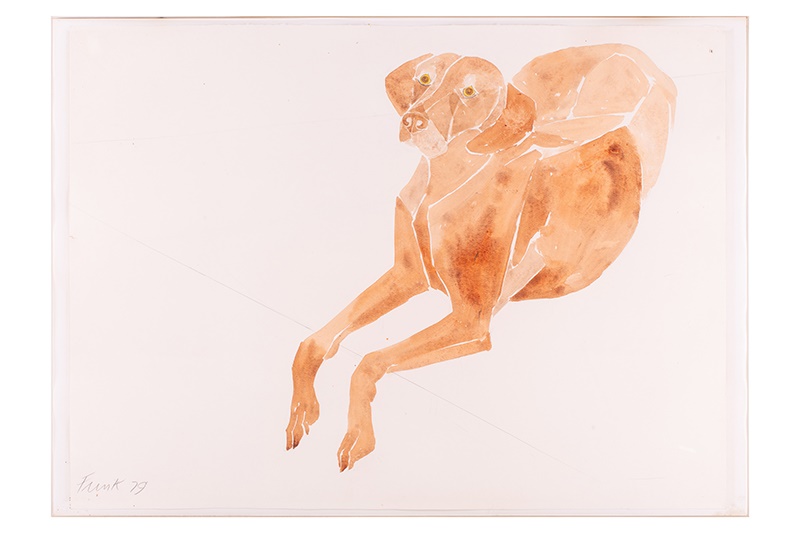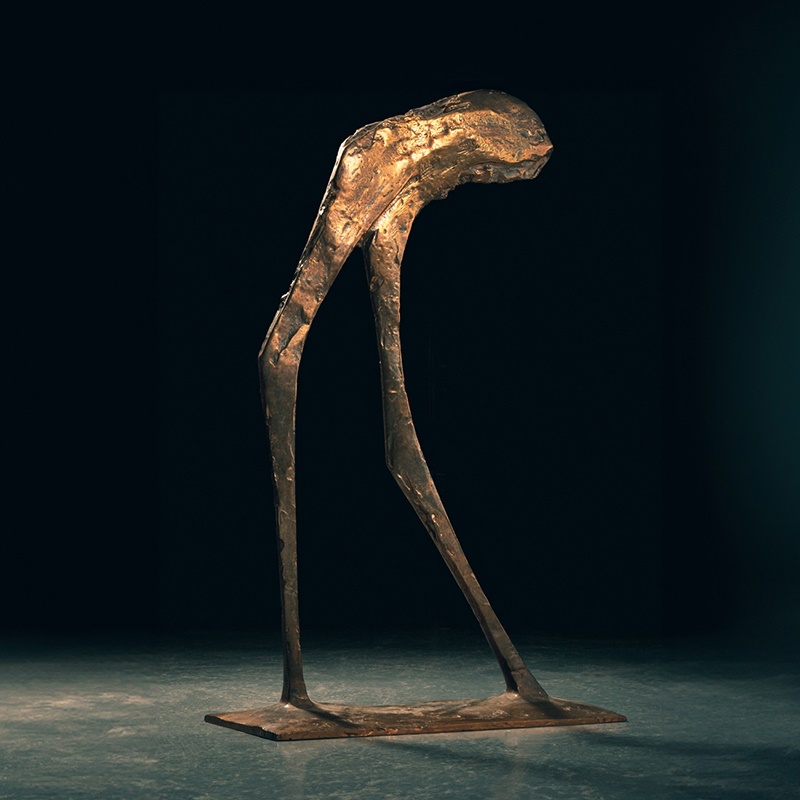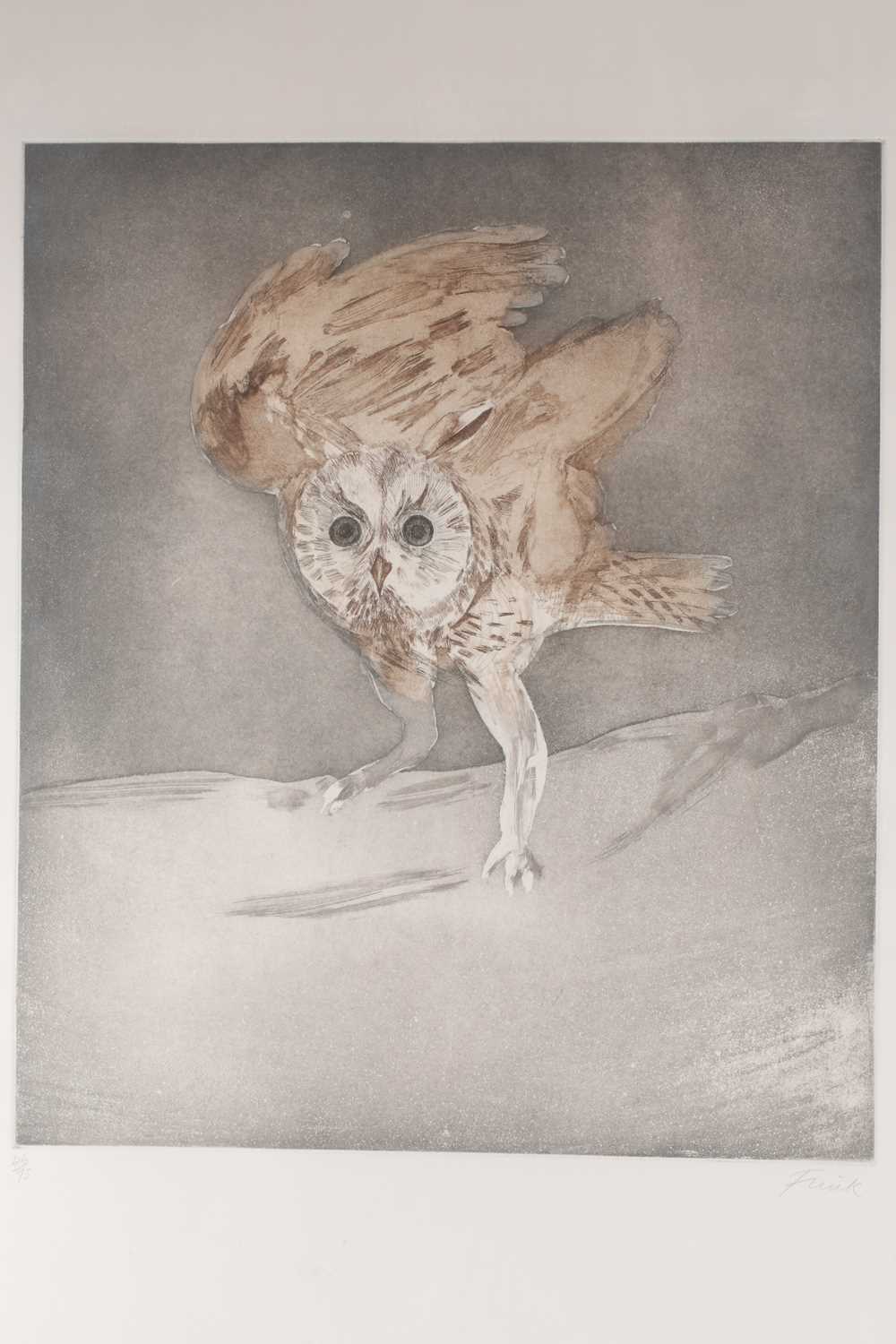A Guide to the Work of Elisabeth Frink
Although she made many drawings and prints, she is most widely known for her monumental sculptures
22/01/2024
In September last year, BBC show Fake or Fortune delighted viewers with their “detective” work. A metal sculpture had been purchased at a car boot sale for £90, once cleaned it revealed the name Elisabeth Frink. Presenters Philip Mould and Fiona Bruce were able to confirm the sculpture as authentic, as well as providing the astonished owner with a staggering valuation of £60,000!
Dame Elisabeth Frink (1930 - 1993), Mirage (1967)
Dame Elisabeth Jean Frink (14 November 1930 – 18 April 1993) was an English sculptor and printmaker. She grew up in Suffolk near a military air base which would profoundly influence her work; when the Second World War broke, Frink and her family were exposed to nightly air raids and regular plane crashes, on one occasion she had to hide under a hedge to avoid gunfire. She also personally witnessed the effects of trauma on returning soldiers, and unsurprisingly, at only nine years old these grim events left a lasting impression. It was around this time that Frink was taught how to draw and paint by a young artist, Rodney Fenwick. In the years before she attended art school, her drawings would feature wounded birds and falling men with a haunting apocalyptic tone.
 Dame Elisabeth Frink (1930 - 1993), Study of the Artist's dog
Dame Elisabeth Frink (1930 - 1993), Study of the Artist's dog
When the war ended, Frink went with her father to Italy where she discovered her love of Renaissance sculpture. After returning to England, she studied at the Guildford School of Art (1946–1949) under Willi Soukop, and at the Chelsea School of Art (1949–1953), during which time she started to create sculptures of men, animals, and religious figures. Her work was typically built up on a wire armature from layers of broken and distressed plaster which would then be worked back with a chisel and surform before being cast in bronze. Frinks early pieces, influenced by a lifelong interest in Alberto Giacometti, are angular and menacing, leading to her work being associated with an older group of artists known as “The Geometry of Fear” sculptors – a group of allegedly tormented artists who closed the gap between 1930s geometric idealism and post-war existentialism. Members included Reg Butler, Bernard Meadows, Kenneth Armitage, and Eduardo Paolozzi.
Frinks first artistic success was “Bird” which was purchased by the Tate when she was only twenty-two years old, and three years later she launched her first solo exhibition at St George's Gallery. It was during the 1960s and 70s when she produced a series of falling figures and winged men, that her intrigue of the human form became apparent. Whilst living in France from 1967 to 1970, she began a series of male heads known as the "goggled heads." Upon returning to England, she shifted focus to male nudes. One example was the “Running Man”, which poses the question as to whether the figure is running towards something or trying to escape.
In the 1980s, a publisher approached Frink to produce a catalogue of her work, and the Royal Academy planned a mid-career retrospective which was so successful that it resulted in four solo exhibitions and several group ones. She also served on an advisory committee for art students while continuing to accept commissions and sculpt.
Dame Elizabeth Frink (1930-1933) British, 'Long-Eared Owl' from 'Six Owl Series
In the early 1990s, Frink was diagnosed with oesophageal cancer. During this time, she made “Green Man” symbolising fertility and the continuation of life. Despite her poor health, she proceeded with what would be her final commission; the monumental “Risen Christ” for Liverpool Cathedral. It was installed a week before her death.
Although she made many drawings and prints, Frink is best known for her bronze sculptures of expressionistic animal figures, evocative male figures, and public sculpture commissions, such as the Horse and Rider (1975) in Piccadilly, London, made for Trafalgar House Investments Ltd. Her work explores themes encapsulating the turmoil between struggle and aggression, predator and prey, masculinity and vulnerability, these intriguing works are truly post-war art.
In 1993 Frink passed away from cancer, her Times obituary noted the three essential themes in her work as "the nature of Man; the 'horseness' of horses; and the divine in human form". In 1996, in recognition of her contributions to arts and culture, Frink was one of five women selected to be featured on British postage stamps.
Are you considering selling any artworks by Elisabeth Frink?
With a global audience of over 10 million, Dawsons can achieve the best price for you at auction.
Get in touch with one of our expert Valuers today, we would be delighted to help:

